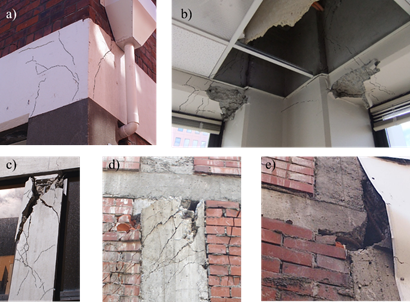STRENGTH HIERARCHY ASSESSMENT METHOD
Asst. Prof. Dr. Ali Sahin Tasligedik
Middle East Technical University Northern Cyprus Campus
Civil Engineering Department
(Selected Example Research)
Strength hierarchy assessment can be used to identify the structural elements that require immediate remediation to prevent development of any severe failure mechanisms. Local failures such as joint shear failure or plastic/shear hinging at a column should be avoided during a design level seismic event (Figure 1). According to capacity design principles, the beams must be the first elements to show plastic hinging for an acceptable seismic response. In this context, the identification of strength hierarchy enables structural engineer to clarify which structural element is the most vulnerable element as well as the type and the extent of strengthening to be applied to the considered structural element. Strength hierarchy assessment can be typically carried out as summarized in Figure 2 for reinforced concrete (RC) frame structures.
Figure 1 Types of failure at a reinforced concrete beam column joint: a) Joint shear failure; b) Plastic hinging at beam ends; c) Column shear failure; d) Column shear failure; e) Joint shear failure- extreme case (photos by A.S. Tasligedik)
Figure 2 Summary of strength hierarchy assessment
More details regarding the development and the application of the method can be found in the publications:
- Tasligedik, A.S., et al. (2018). Strength Hierarchy at Reinforced Concrete Beam-Column Joints and Global Capacity. Journal of Earthquake Engineering. 22(3): p. 454-487.
- Tasligedik, A.S. (2018). Capacity estimation of FRP strengthened RC beam-column joints using hierarchy of strength assessment. Bulletin of Earthquake Engineering. 16(3): p. 1323-1340.
- Tasligedik, A.S. (2022). Shear Capacity N-M Interaction Envelope for RC Beam-Column Joints with Transverse Reinforcement: A Concept Derived from Strength Hierarchy. Journal of Earthquake Engineering. 26(5).








